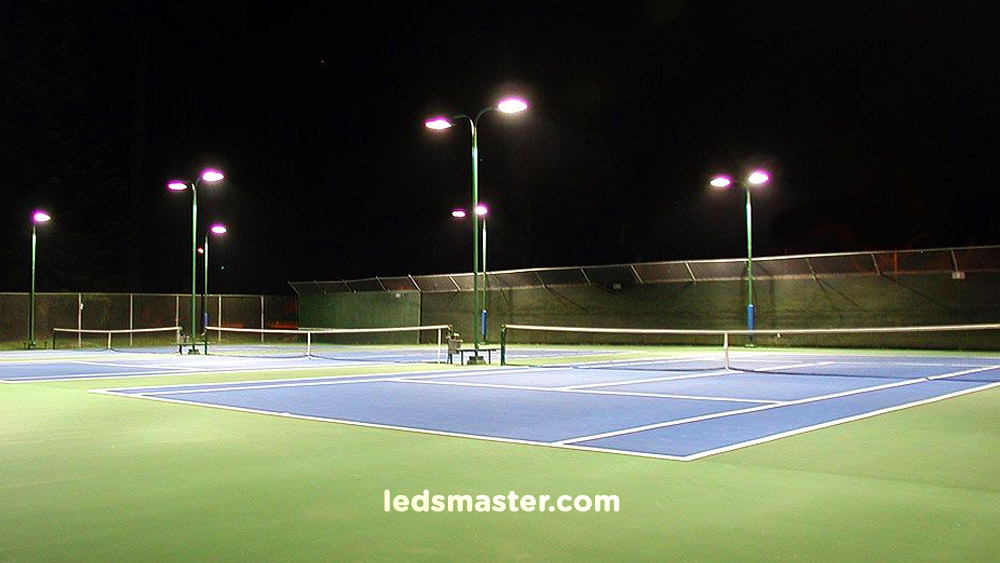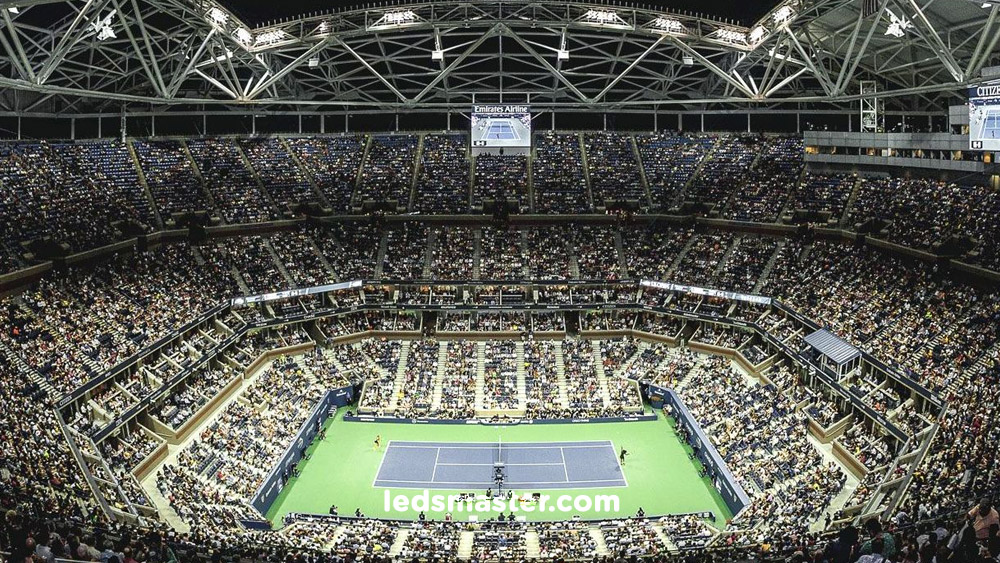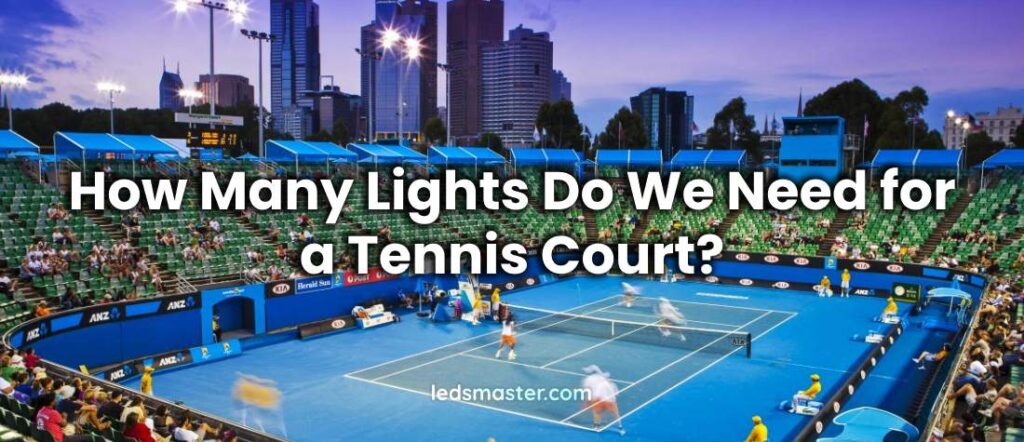When considering the lighting for tennis courts, the number of lights required is a topic that often raises questions. The quantity of lights varies significantly depending on whether the court is situated indoors or outdoors. Outdoor courts typically require more lights due to the need to compensate for natural lighting conditions and the potential for uneven illumination caused by shadows and ambient light sources. In contrast, indoor courts can be more controlled environments, allowing for fewer lights to achieve desired brightness levels.
Furthermore, the lighting needs differ based on the intended level of play. Recreational courts, where play is generally less intense and competitive, typically have lower lux requirements, often around 300 lux. This level of lighting ensures basic visibility for recreational players without the need for excessive brightness. On the other hand, professional and competitive venues demand much higher lux levels to support the fast-paced nature of the game and the need for precise ball tracking. Professional tennis courts may require lux levels reaching up to 750, ensuring that players can see and react to the ball quickly and accurately.
| Tennis court classes | How many lights do we need for the tennis court |
| Class I (Professional) | 50 to 100 lights |
| Class II (College, high school) | 8 to 16 lights |
| Class III (Recreational, tennis club) | 4 to 8 lights |
From the table above, we can see that the number of tennis court lights increases with the level of competition. For a Class I professional tennis arena, up to 50 lights may be needed to properly illuminate the playing area. In contrast, recreational or residential tennis courts typically require only 4 to 8 lights. This significant difference between Class I and lower classes, such as Class II, is due to the higher lux levels required for professional play. Higher lux levels ensure that players can clearly see fast-moving tennis balls, which is essential for high-level performance. Additionally, the increased lumen output and higher lux levels provide a better visual experience for spectators, enhancing their ability to follow the action on the court.
Table of Contents
ToggleHow Many Lights Do We Need for a Tennis Club?

When designing the lighting system for a tennis club that utilizes a six-pole configuration, it’s typical to allocate between 4 to 8 lights per tennis court. This distribution means there will be approximately 1 to 2 lights per pole, which varies based on the specific layout and lighting requirements of the facility. For example, a tennis court with six poles would generally necessitate a total of either 6 or 12 lights, depending on whether each pole supports one or two fixtures.
The wattage of each lighting fixture usually falls within the range of 200 to 500 watts. This wattage selection is determined by the brightness criteria established by the tennis club management, ensuring adequate illumination levels across the playing surface. Higher wattages may be chosen for outdoor courts or facilities where brighter lighting is necessary to accommodate evening or tournament play, while lower wattages might suffice for recreational or indoor settings.
These specifications are crucial in ensuring that the tennis court meets the visibility needs not only of players during matches but also of spectators enjoying the game. Proper lighting enhances safety, allows for better ball tracking, and creates an enjoyable experience for all participants and observers involved in tennis club activities.
How Many LED Lights Are Required to Light a High School Tennis Court?
When considering the lighting needs for a high school tennis court, it’s important to ensure adequate illumination to meet the lux requirements for optimal visibility during matches. Typically, high school tennis courts require a higher lux level compared to recreational settings, necessitating a greater number of LED lighting fixtures.
For instance, a high school tennis court often requires between 8 to 16 LED lights if they are arranged with 4 lights per pole. This configuration ensures comprehensive coverage across the playing area, enhancing visibility for players and spectators alike. Even in cases where multiple courts share poles, the total number of lights remains consistent to maintain the required lux levels throughout each court.
Choosing the right number and placement of LED lights is critical not only for meeting gameplay standards but also for promoting safety and enjoyment during evening matches or events. Each lighting fixture is strategically positioned to minimize shadows and provide uniform illumination, thereby supporting optimal performance on the court.
How Many Lights Are Needed for a Tennis Stadium or Tennis Arena?

When determining the lighting requirements for a tennis stadium or arena, the considerations differ significantly from those of a tennis club. A tennis stadium demands substantially higher levels of illumination to meet professional standards and ensure optimal viewing conditions for both players and spectators.
Typically, a Class 1 tennis stadium necessitates lighting levels ranging from 1000 to 1500 lux. Achieving this requires approximately 50 to 100 lights, strategically installed around the stadium’s roof structure. This setup is crucial for achieving superior uniformity and eliminating shadows on the court, which enhances visibility and ensures fair play conditions.
The placement of lights around the roof perimeter enables light to be dispersed evenly across the playing surface from multiple angles. This comprehensive coverage not only minimizes shadows but also enhances the visibility of fast-moving tennis balls, crucial for players and umpires alike. Moreover, the ample lighting facilitates a vibrant spectator experience, allowing fans to follow the action without visual hindrances, whether during daytime or nighttime events.
Conclusion
Determining the exact number of lights required for a tennis court is not straightforward, as it hinges on several variables including the level of play, pole arrangement, and court type. Factors such as whether the court is indoor or outdoor, the desired lux levels, and the specific requirements of the facility all play a crucial role in determining the optimal lighting setup. If you have inquiries or need guidance regarding tennis court lighting, we encourage you to reach out to us for a complimentary lighting consultation. Our experts can provide tailored advice to ensure your tennis court is appropriately illuminated for optimal performance and enjoyment.

